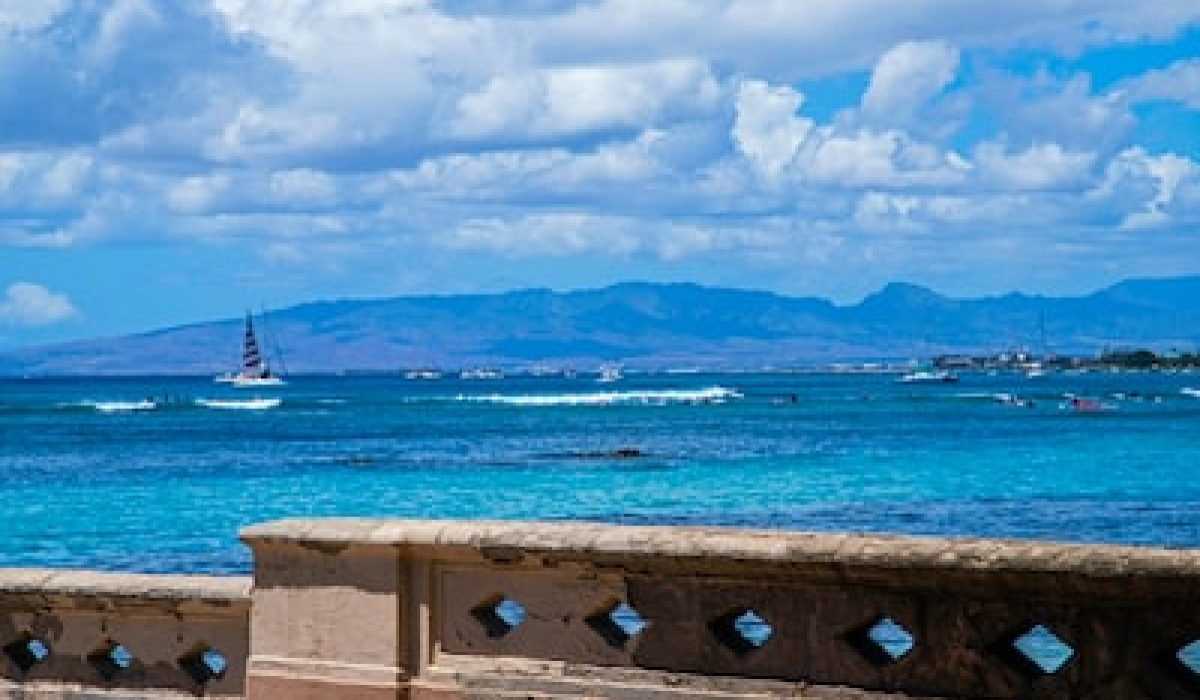Exploring the vast oceans and embarking on a solo sailing adventure is a dream for many adventurous souls. However, before setting sail, it is crucial to be well-prepared and equipped with essential navigation tools. Navigating through challenging weather conditions alone is another challenge altogether, and ensuring safety measures are in place becomes paramount. But what about coping with the loneliness and isolation that comes with being at sea for extended periods? In this blog post, we will delve into each of these subtopics, providing valuable information and tips to make your solo sailing adventure both safe and enjoyable.
Preparing Your Solo Sailing Adventure
Sailing solo can be an exhilarating and rewarding experience. It offers the chance to connect with nature, test your skills, and embark on a personal journey of self-discovery. However, before setting sail on your solo adventure, it is essential to be well-prepared. Planning and preparation are key to ensuring a safe and successful voyage. In this blog post, we will explore the necessary steps and considerations for preparing your solo sailing adventure.
First and foremost, familiarize yourself with the area you plan to sail. Research the local waters, weather patterns, and any potential hazards or regulations specific to the location. This knowledge will help you anticipate challenges and make informed decisions while at sea. Additionally, invest in a reliable and up-to-date nautical chart or navigation software to aid in route planning and tracking your progress.
Next, ensure that your boat is well-maintained and in seaworthy condition. Conduct a thorough inspection of all essential systems, including the engine, rigging, sails, and safety equipment. Replace any worn or damaged parts and stock up on necessary spare parts and tools. Regularly check and service your boat’s engine to avoid any unexpected breakdowns that could leave you stranded.
Essential Navigation Tools For Solo Sailors 👇
Sailing solo can be an exhilarating and fulfilling adventure. It allows you to immerse yourself in the tranquility of the open sea, providing moments of introspection and pure bliss. However, sailing alone also presents unique challenges that require careful navigation and preparation. As a solo sailor, it is crucial to equip yourself with the necessary navigation tools to ensure a safe and enjoyable journey.
1. GPS System
A Global Positioning System (GPS) is a must-have tool for any solo sailor. It uses satellites to determine your precise location, providing you with accurate and real-time data. With a GPS system, you can easily track your progress, plan your route, and avoid potential hazards. It is essential to choose a GPS device specifically designed for marine use, ensuring it is waterproof, durable, and equipped with necessary navigational features.
2. Nautical Charts
Nautical charts are essential for solo sailors as they provide detailed information about the coastline, water depths, and potential obstacles. These charts help you create a mental picture of your surroundings and plan your voyage accordingly. With nautical charts, you can identify safe passages, navigate through channels, and avoid shallow areas or reefs. It is advisable to carry both paper charts as a backup and electronic charts for convenience.
3. Compass
A compass is one of the oldest and most reliable navigation tools. It helps you determine your boat’s heading and provides a reference for direction. A magnetic compass should always be present on your sailboat, as it does not rely on external power sources. Additionally, electronic compasses can be integrated into your GPS or chartplotter system, providing more accurate readings. It is essential to regularly calibrate your compass to ensure precise navigation.
4. Chartplotter
A chartplotter is a navigation system that combines electronic charts with GPS capabilities. It allows you to visualize your boat’s position, track your route, and plan your journey with ease. Many modern chartplotters also provide additional features such as AIS (Automatic Identification System) integration, weather updates, and destination planning. However, it is crucial to familiarize yourself with the operation of your chartplotter before embarking on your solo sailing adventure.
Navigation Tools Features GPS System Real-time positioning, route planning Nautical Charts Coastline details, water depths, obstacles Compass Determining boat heading, direction reference Chartplotter Electronic charts, GPS integration
By utilizing these essential navigation tools, solo sailors can navigate the open sea with confidence and ensure a safe passage. However, it is important to remember that technology can sometimes fail. Therefore, it is recommended to develop strong navigational skills, including dead reckoning and celestial navigation, to rely on when needed. Stay prepared, stay vigilant, and embark on your solo sailing adventure with the right tools by your side!
Navigating Challenging Weather Conditions Alone ⏬
Navigating Challenging Weather Conditions Alone
Sailing solo can be a thrilling and adventurous experience, but it also comes with its fair share of challenges. One of the most significant challenges that solo sailors often face is navigating challenging weather conditions alone. Being at the mercy of the elements can be daunting, but with the right preparation and the essential navigation tools, solo sailors can ensure their safety and successfully overcome the difficulties imposed by unpredictable weather.
When it comes to sailing solo, being well-prepared is the key to staying safe. Before embarking on any solo sailing adventure, it is crucial to thoroughly check and maintain your boat and equipment. Ensure that all your safety gear, such as life jackets, distress signals, and first aid kits, are in good condition and easily accessible. Additionally, it is essential to carry extra food, water, and fuel, as well as spare parts and tools for any unforeseen mechanical issues that could arise during your journey.
Equipping yourself with the essential navigation tools is another vital aspect of solo sailing. A reliable and up-to-date chartplotter or navigation system is a must-have, as it will provide you with accurate information about your position and aid in route planning. Moreover, a handheld GPS device can be a valuable backup, especially in case of an electrical failure or if you need to abandon your boat. It is also advisable to have paper charts and a compass as backup navigation tools, as they do not rely on electricity or technology.
When facing challenging weather conditions while sailing alone, it is essential to have access to up-to-date weather forecasts. Before setting sail, thoroughly study and analyze the weather patterns and take note of any potential storms, squalls, or high winds that might be heading your way. With the help of modern technology, you can subscribe to weather services or use apps that provide real-time weather information specifically designed for sailors. Being aware of the weather conditions will allow you to plan your route more effectively and take necessary precautions to avoid dangerous situations.
In addition to relying on technology, it is crucial to understand and interpret the signs of changing weather conditions while at sea. Keep an eye on the sky for any darkening clouds, sudden shifts in wind direction, or changes in sea state. These visual cues can help you anticipate the onset of bad weather and take action to secure your boat accordingly. It is always better to be proactive in avoiding rough weather conditions rather than being caught off guard.
Sailing solo can be a test of both physical and mental strength, especially when facing challenging weather conditions alone. It is essential to prioritize your safety and never take unnecessary risks. Make sure to create a thorough safety plan before embarking on your solo adventure and share it with someone ashore. Regularly check-in with them to update them on your whereabouts and ensure that someone is aware of your estimated time of arrival and intended route.
Essential Navigation Tools for Solo Sailors Navigating Challenging Weather Conditions Alone Maintaining Safety Measures While Sailing Solo Chartplotter or navigation system Accurate weather forecasts Thorough safety plan Handheld GPS device Paper charts and compass Regular check-ins with someone ashore Safety gear – life jackets, distress signals, etc. Understanding signs of changing weather conditions
Maintaining Safety Measures While Sailing Solo
Sailing solo can be an incredibly fulfilling and adventurous experience. The freedom of being out on the open water, relying solely on yourself to navigate and make decisions, is both exhilarating and empowering. However, it is crucial to prioritize safety when undertaking a solo sailing adventure. In this blog post, we will explore some essential safety measures that every solo sailor should keep in mind.
1. Prepare a Detailed Safety Plan:
Before embarking on your solo sailing expedition, it is essential to create a comprehensive safety plan. This plan should outline various safety procedures, emergency contacts, and protocols to follow in case of unforeseen circumstances. It is vital to inform someone ashore about your itinerary, including your intended route and estimated arrival times at specific destinations. Regularly updating your safety plan will ensure that you are well-prepared for any potential challenges while sailing solo.
2. Invest in Reliable Safety Equipment:
Equipping your boat with reliable safety equipment is of utmost importance when sailing solo. Life jackets, harnesses, and tethers should always be on board and worn at all times while underway. Additionally, investing in an EPIRB (Emergency Position Indicating Radio Beacon) is crucial, as it can transmit your location to rescue authorities in case of an emergency. Installing a fire extinguisher, flares, and an onboard first aid kit are also indispensable safety measures that every solo sailor should prioritize.
3. Stay Updated with Weather Forecasts:
Weather conditions can change rapidly at sea, posing potential risks to solo sailors. It is vital to stay updated with accurate and reliable weather forecasts before and during your voyage. Consider installing a weather radio or utilizing weather forecasting apps to receive real-time updates on wind patterns, storm warnings, and other relevant information. By staying aware of the weather conditions, you can make informed decisions and navigate safely while sailing solo.
4. Practice Regular Communication:
One of the challenges of sailing solo is the lack of someone to rely on for assistance in case of emergencies. To mitigate this, it is crucial to establish regular communication with someone ashore. This can be achieved through scheduled check-ins via radio or satellite phone. Informing a trusted contact about your intended daily check-in times and locations ensures that someone is always aware of your well-being and can raise an alarm if you fail to make contact.
Conclusion:
Safety should always be the top priority when sailing solo. By preparing a detailed safety plan, investing in reliable safety equipment, staying updated with weather forecasts, and practicing regular communication, solo sailors can ensure a safer and more enjoyable experience. Remember, while the thrill of sailing solo is unmatched, it’s essential to maintain safety measures to tackle any challenges that may arise along the way.
Coping With Loneliness And Isolation At Sea
Coping With Loneliness And Isolation At Sea
Sailing solo can be an incredible adventure, allowing you to test your skills and push your boundaries. However, one of the biggest challenges that solo sailors face is coping with the feelings of loneliness and isolation that can arise when spending long periods at sea. Being proactive and implementing effective strategies can make a significant difference in managing these emotions and ensuring a positive and enjoyable solo sailing experience.
1. Stay Connected: While sailing solo, it’s crucial to maintain communication with loved ones and fellow sailors. Before embarking on your journey, make sure you have reliable communication equipment, such as a satellite phone, marine radio, or a personal locator beacon (PLB). Regularly checking in with friends and family can alleviate feelings of loneliness and provide a sense of security.
2. Embrace Technology: In today’s digital age, technology offers various ways to overcome isolation at sea. Take advantage of social media platforms, blogs, or vlogs to document your experiences and engage with a supportive online community. Sharing your journey and reading about the experiences of others can provide a sense of connection and camaraderie.
3. Establish Routines: Loneliness can often be minimized by establishing daily routines. Creating a schedule for activities, such as reading, exercise, cooking, or writing, can give structure to your day and keep your mind engaged. Setting goals and accomplishing tasks will keep you motivated and distracted from any feelings of isolation.
Life at Sea
As a solo sailor, it’s important to acknowledge that feelings of loneliness and isolation may arise during your journey. However, with the right preparations and mindset, you can cope effectively and make the most of your time at sea. Remember to stay connected, embrace technology, and establish routines to stay mentally and emotionally healthy throughout your solo sailing adventure.
- Key Takeaways:
- Stay connected with loved ones and fellow sailors through reliable communication equipment.
- Utilize technology and online platforms to share your experiences and connect with a supportive community.
- Create daily routines and set goals to stay mentally engaged and distracted from feelings of isolation.
| Pros | Cons |
|---|---|
| Opportunity for self-discovery and personal growth | Feelings of loneliness and isolation |
| Unmatched freedom and solitude | Challenges in managing mental and emotional well-being |
| Testing of skills and resilience | Potential risks and safety concerns |
Frequently Asked Questions
What are some essential navigation tools for solo sailors?
Some essential navigation tools for solo sailors include a compass, GPS device, marine charts, depth sounder, and autopilot system.
How can solo sailors navigate challenging weather conditions?
Solo sailors can navigate challenging weather conditions by closely monitoring weather reports, using weather routing services, adjusting sail plans accordingly, and seeking shelter if necessary.
What safety measures should solo sailors maintain while sailing alone?
Solo sailors should maintain safety measures such as wearing a life jacket, using harness lines, setting up jacklines, installing an emergency beacon, having a well-equipped first aid kit, and practicing man overboard drills.
How can solo sailors cope with loneliness and isolation at sea?
Solo sailors can cope with loneliness and isolation at sea by staying connected with loved ones through satellite communication devices, engaging in hobbies or activities aboard, practicing mindfulness and self-reflection, and preparing mentally for the challenges of solitude.
What are some important considerations for solo sailors when it comes to emergencies?
Some important considerations for solo sailors during emergencies include having a well-thought-out emergency plan, knowing how to use distress signals and emergency equipment, practicing emergency drills, and staying calm and focused in stressful situations.
How can solo sailors stay motivated during their solo sailing adventure?
Solo sailors can stay motivated by setting goals for themselves, celebrating small milestones, maintaining a positive mindset, engaging in self-motivating activities like listening to inspiring podcasts or music, and visualizing the rewards of completing their voyage.
How can solo sailors maintain their mental well-being during a solo voyage?
Solo sailors can maintain their mental well-being by establishing daily routines, staying physically active, practicing self-care, maintaining a healthy diet, monitoring their thoughts and emotions, and seeking professional support if needed.




